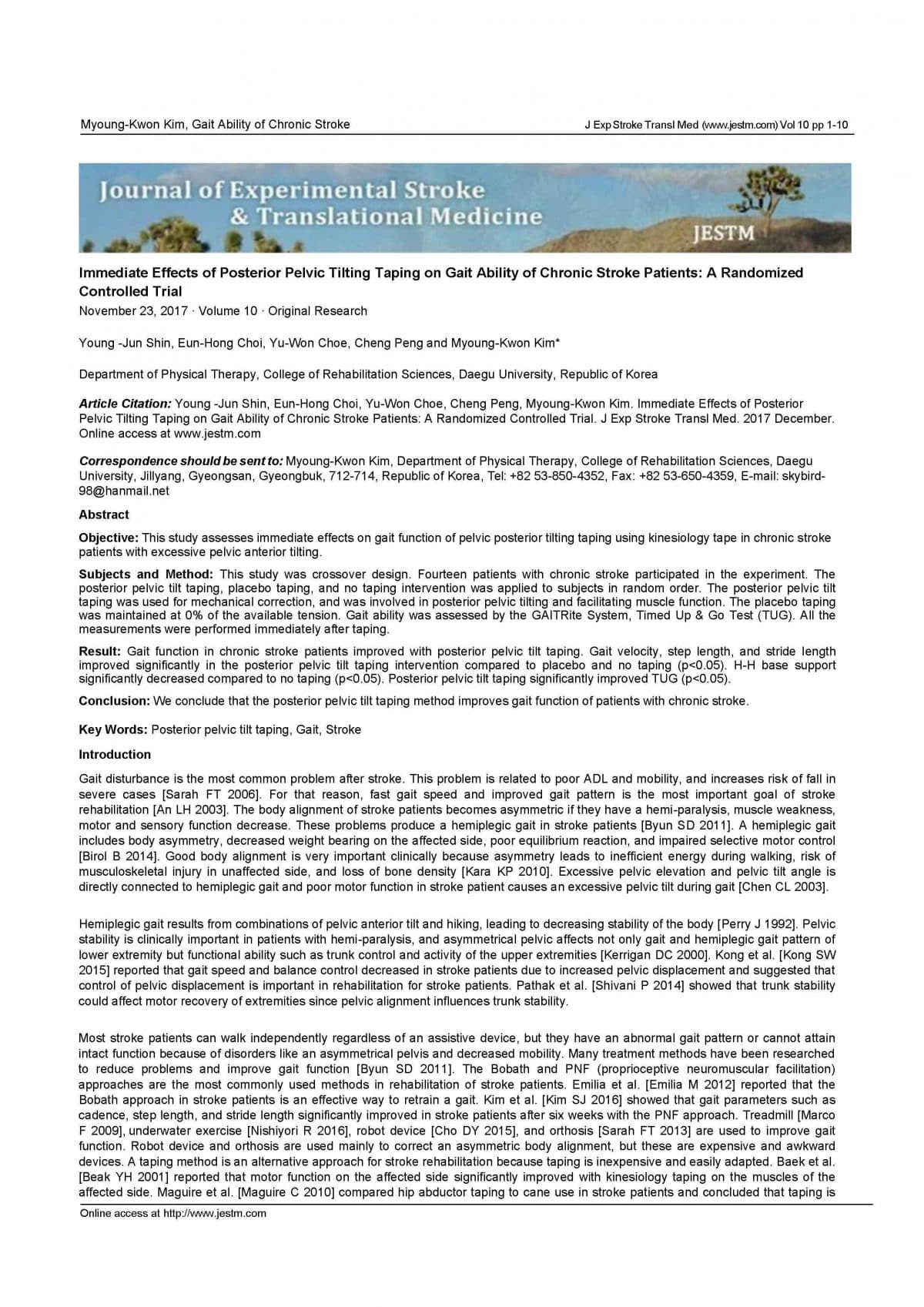Myoung-Kwon Kim, Gait Ability of Chronic Stroke
J Exp Stroke Transl Med (www.jestm.com) Vol 10 pp 1-10
Immediate Effects of Posterior Pelvic Tilting Taping on Gait Ability of Chronic Stroke Patients: A Randomized
Controlled Trial
November 23, 2017 Volume 10 Original Research
Young -Jun Shin, Eun-Hong Choi, Yu-Won Choe, Cheng Peng and Myoung-Kwon Kim*
Department of Physical Therapy, College of Rehabilitation Sciences, Daegu University, Republic of Korea
Article Citation: Young -Jun Shin, Eun-Hong Choi, Yu-Won Choe, Cheng Peng, Myoung-Kwon Kim. Immediate Effects of Posterior Pelvic Tilting Taping on Gait Ability of Chronic Stroke Patients: A Randomized Controlled Trial. J Exp Stroke Transl Med. 2017 December.
Online access at www.jestm.com
ABSTRACT
Objective: This study assesses immediate effects on gait function of pelvic posterior tilting taping using kinesiology tape in chronic stroke patients with excessive pelvic anterior tilting.
Subjects and Method: This study was crossover design. Fourteen patients with chronic stroke participated in the experiment. The posterior pelvic tilt taping, placebo taping, and no taping intervention was applied to subjects in random order. The posterior pelvic tilt taping was used for mechanical correction, and was involved in posterior pelvic tilting and facilitating muscle function. The placebo taping was maintained at 0% of the available tension. Gait ability was assessed by the GAITRite System, Timed Up & Go Test (TUG). All the measurements were performed immediately after taping.
Result: Gait function in chronic stroke patients improved with posterior pelvic tilt taping. Gait velocity, step length, and stride length improved significantly in the posterior pelvic tilt taping intervention compared to placebo and no taping (p<0.05). H-H base support significantly decreased compared to no taping (p<0.05). Posterior pelvic tilt taping significantly improved TUG (p<0.05).
Conclusion: We conclude that the posterior pelvic tilt taping method improves gait function of patients with chronic stroke.
Key Words: Posterior pelvic tilt taping, Gait, Stroke
Correspondence should be sent to: Myoung-Kwon Kim, Department of Physical Therapy, College of Rehabilitation Sciences, Daegu University, Jillyang, Gyeongsan, Gyeongbuk, 712-714, Republic of Korea, Tel: +82 53-850-4352, Fax: +82 53-650-4359, E-mail: skybird-98@hanmail.net




